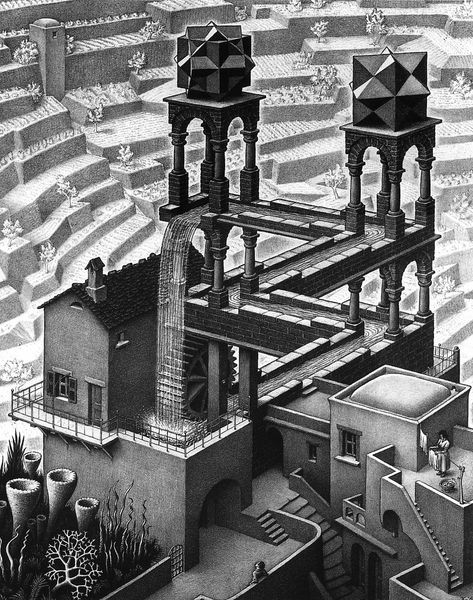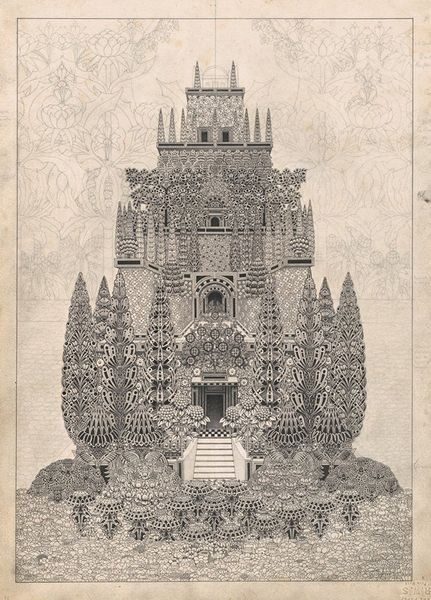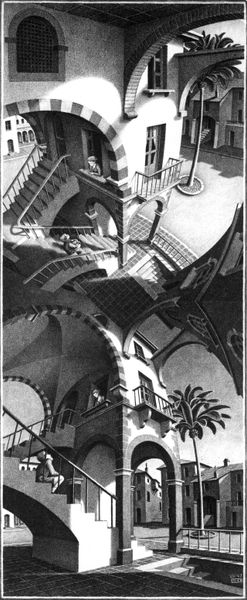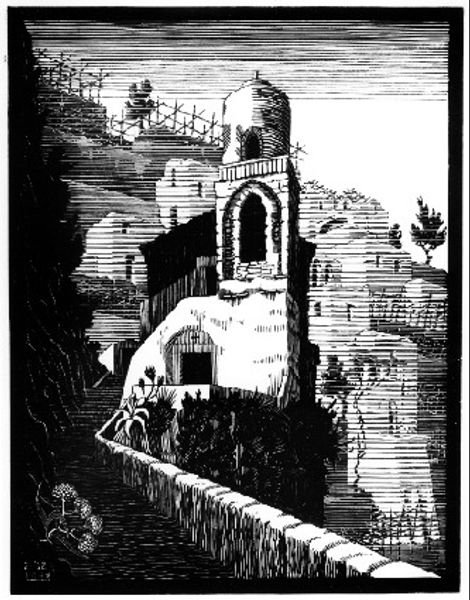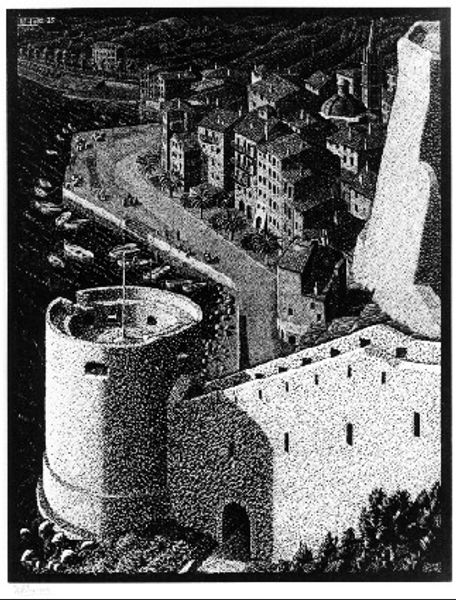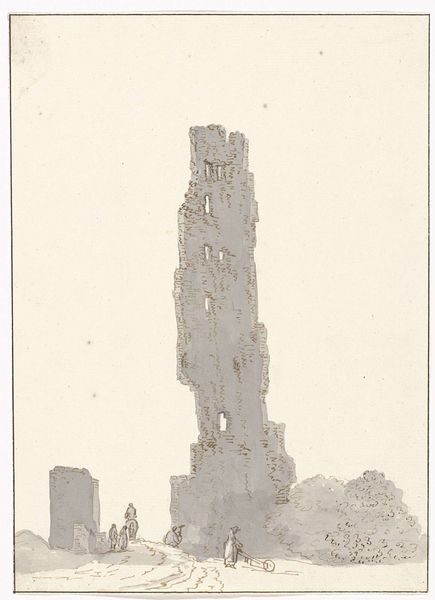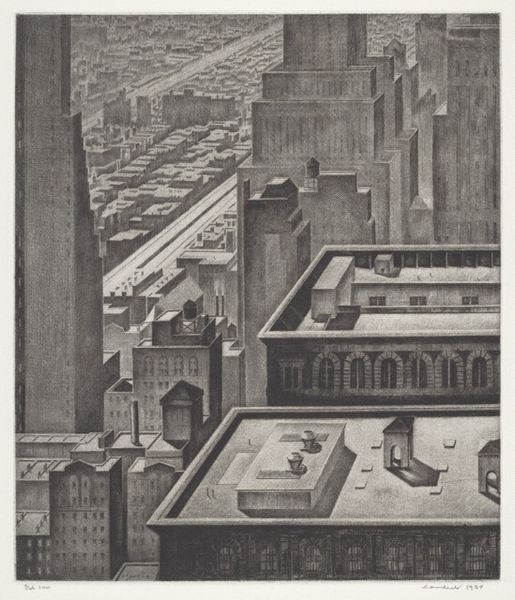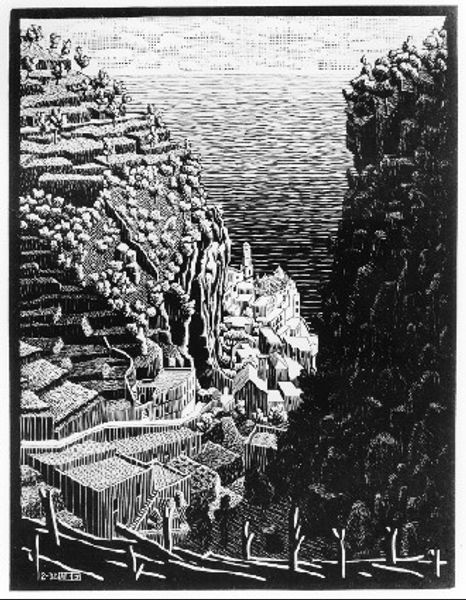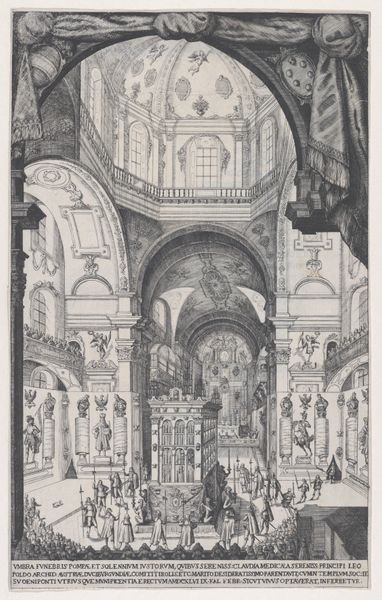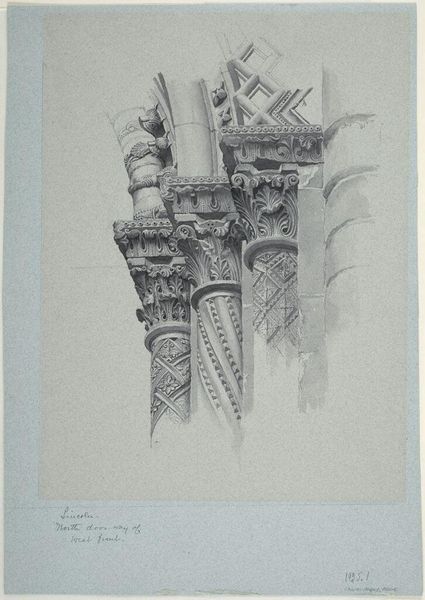
drawing, print, photography, graphite
#
drawing
# print
#
perspective
#
photography
#
geometric
#
black and white
#
abstraction
#
graphite
#
cityscape
#
history-painting
#
pencil art
#
modernism
#
intricate and detailed
Copyright: M.C. Escher,Fair Use
M.C. Escher made this Tower of Babel as a lithograph, meaning it's a print made from a stone, sometime in the early to mid 20th century. Escher must have thought long and hard about this, turning and returning to it in his mind. Look at the tiny marks; uniform lines, hatched marks, that create a sense of depth. The eye is drawn upwards, following the receding planes of this impossible structure, but Escher keeps us off balance. The tower itself looks like the product of a thousand different minds. Each section is built on the last with no real plan, no sense of overall structure. I keep coming back to the top level, to those tiny figures who seem to be throwing up their arms in exasperation. Maybe they are celebrating but I see a kind of despair. Escher reminds me a little of Piranesi, another printmaker obsessed with scale and architectural forms. Like Piranesi, Escher shows us that art is a place for constant experimentation, where an artist can build and rebuild the world according to his own logic.
